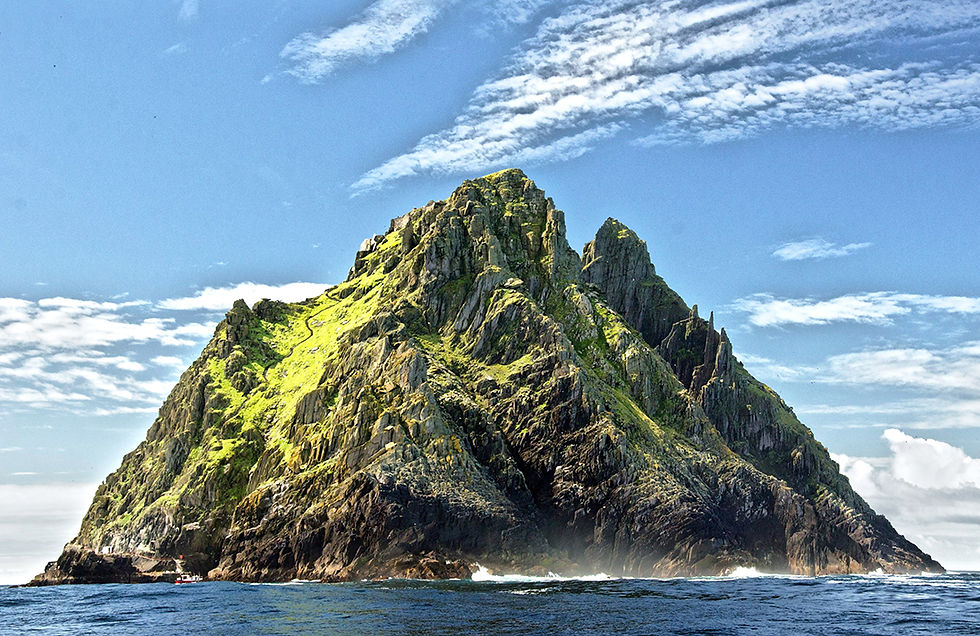Field Notes

Skellig Michael or Great Skellig, home to the ruined remains of a Christian monastery and a variety of seabirds, including gannets and puffins. Photography: MN Studio.
Crossing the boundary between geography and legend
By Michael Webster
Skellig Michael, located about seven miles off the coast of County Kerry, Ireland, rises from the Atlantic like a jagged apparition – a pyramid of rock, weather and wheeling seabirds. Once a sanctuary for early Christians and a nautical landmark for cartographers in the 18th and 19th centuries, the island has always existed on the boundary between legend and geography.
Reaching it still depends on calm seas, timing and a little luck, which only sharpens the sense of stepping into a place the world has kept tucked away. Skellig Michael is less a destination than a visitation – a raw, elemental outpost where nature sets the terms and history clings on in the most dramatic way imaginable.

Skellig Michael, Ireland. Photographer: Michael.
Skellig Michael (or Great Skellig) sits beside its smaller sibling, Little Skellig, but only the main island, which is home to the ancient monastery, is accessible to visitors. At its summit sits the beehive monastery, a marvel of patience and endurance. Its dry-laid huts, narrow stairways and tiny oratory cling to the rock with improbable resolve. This is architecture stripped to its bones, with stone cells shaped for prayer, silence and survival. The climb is steep, the air salted and wild, and at the top you find a world reduced to essentials – narrow stairways, a tiny oratory, a scattering of stone cells shaped for prayer, silence and survival. For solo travellers, it feels like stepping into a myth, a place where devotion met the horizon, and humanity proved how lightly it can live on the edge of the world.

The Great Skellig climb is steep, the air salted and wild, and at the top you find a world reduced to essentials. Photographer: Subhrambar.
Once a monastic outpost in the 6th century, the island stepped into a very different kind of mythology when it became a key filming location for the Star Wars saga. Its raw, improbable landscape translated effortlessly to ‘a galaxy far, far away’, and for fans, Skellig Michael has become a pilgrimage of its own, a place where cinematic fantasy and ancient history sit side by side on the edge of the Atlantic.
As the team at Skellig Island Tours tell us, “Skellig Michael’s striking landscape and isolated beauty made it the perfect backdrop for the Star Wars sequel trilogy. First appearing in The Force Awakens (2015) and later in The Last Jedi (2017), the island became the remote hideaway for Luke Skywalker. Its sharp, rocky cliffs and ancient stone steps instantly transported viewers to Ahch-To, the planet where Luke went into exile.”

A resident puffin on Skellig Michael. Photographer: Mana5280.
To find out more about including this extraordinary treasure on your itinerary, visit our friends at Skellig Island Tour via their website here.
Michael Webster is The Solo Traveller’s International Community Development Lead.


